Challenges of Growing Pumpkins
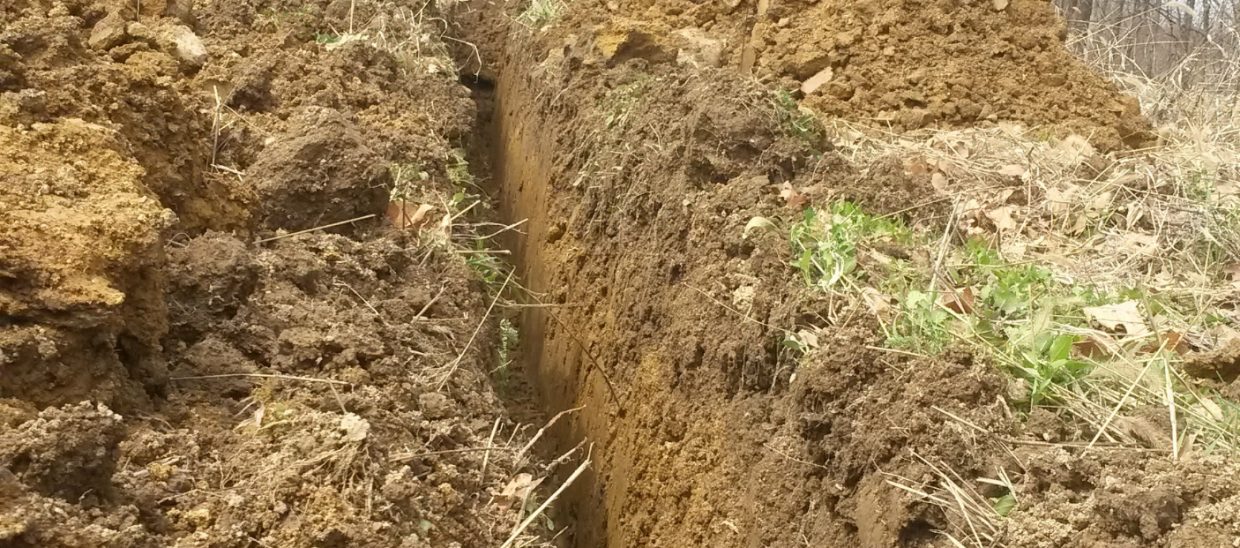
Excessive rain always causes smaller, weaker plants in areas where the water can't drain. Therefore, the first step of preparing the soil is to dig trenches and lay tile so that these areas can drain.
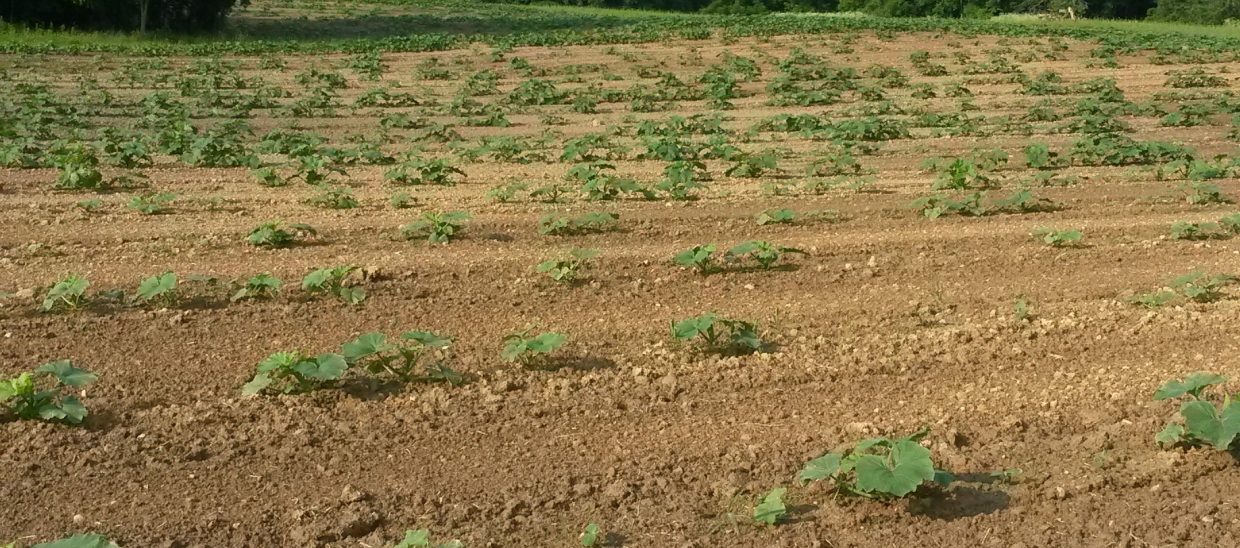
Due to a dry spell just after planting, not all the seeds germinated (sprouted and grew).
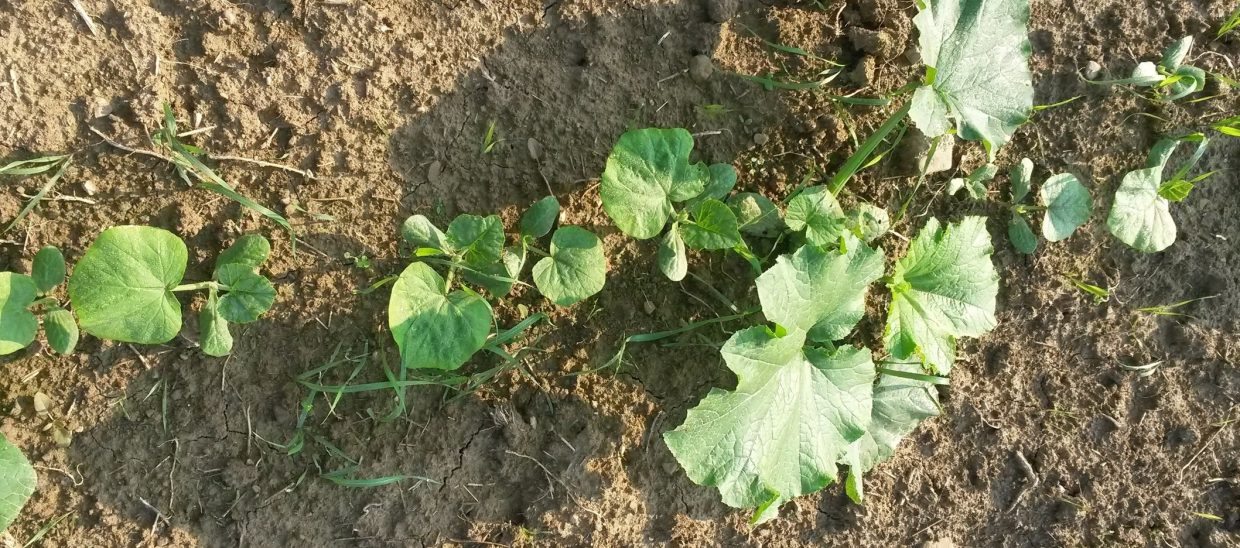
Although the grass growing here may not appear to be a problem, if left it will rob the pumpkins of sunshine, moisture and nutrients. The only solution is for us to hoe the entire field by hand.
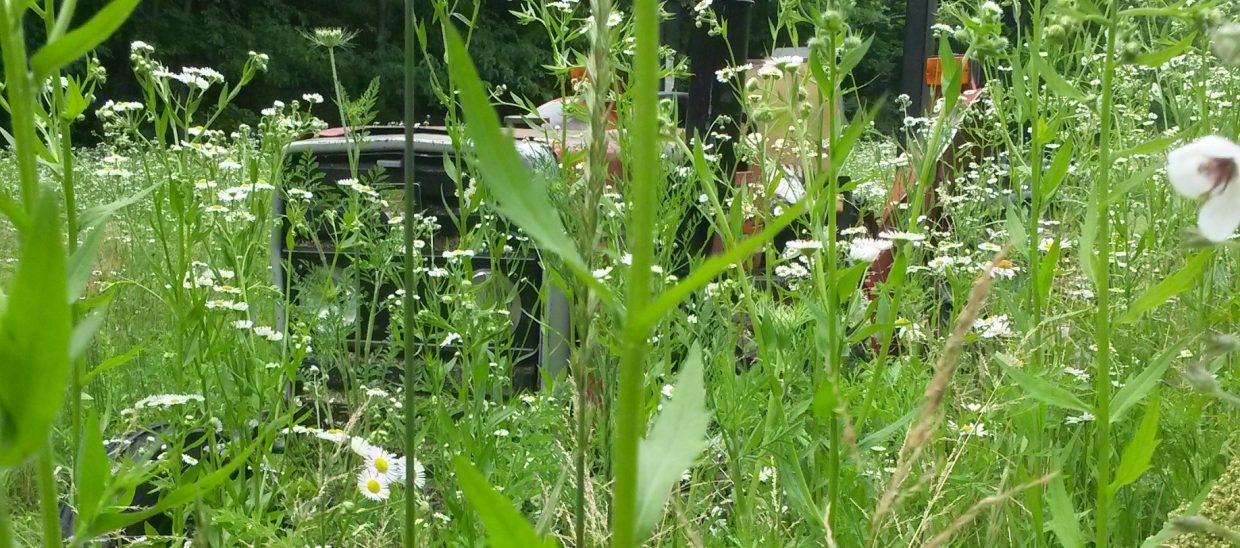
This is last year's pumpkin patch. With no plowing, rototilling, or other efforts to eliminate weeds, the vegetation is so thick one can barely see the tractor just a short distance away!
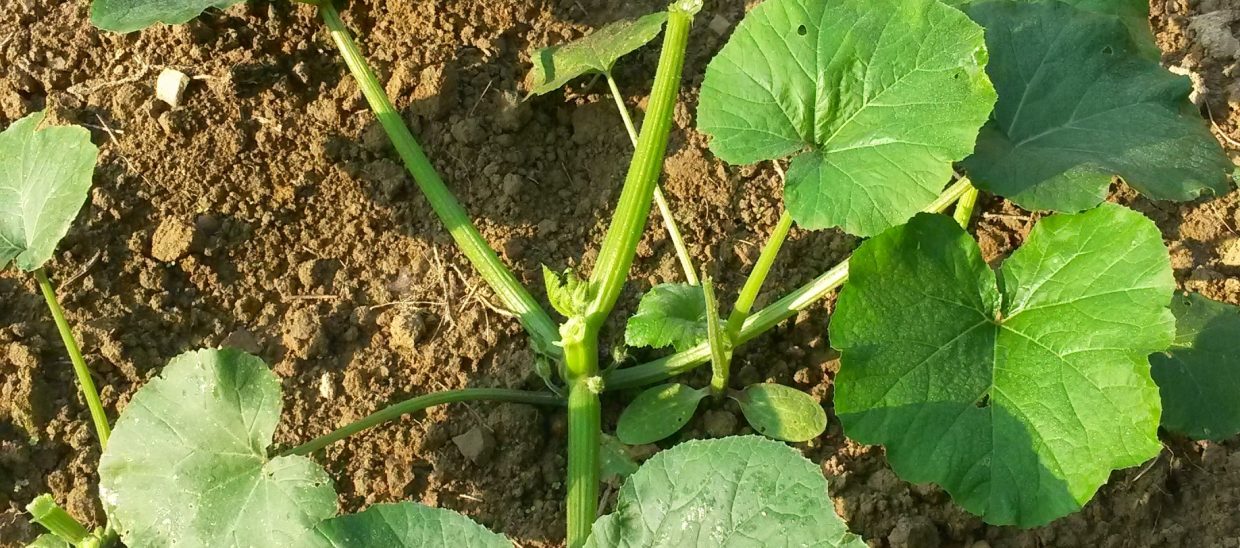
An animal has eaten off the top leaves.
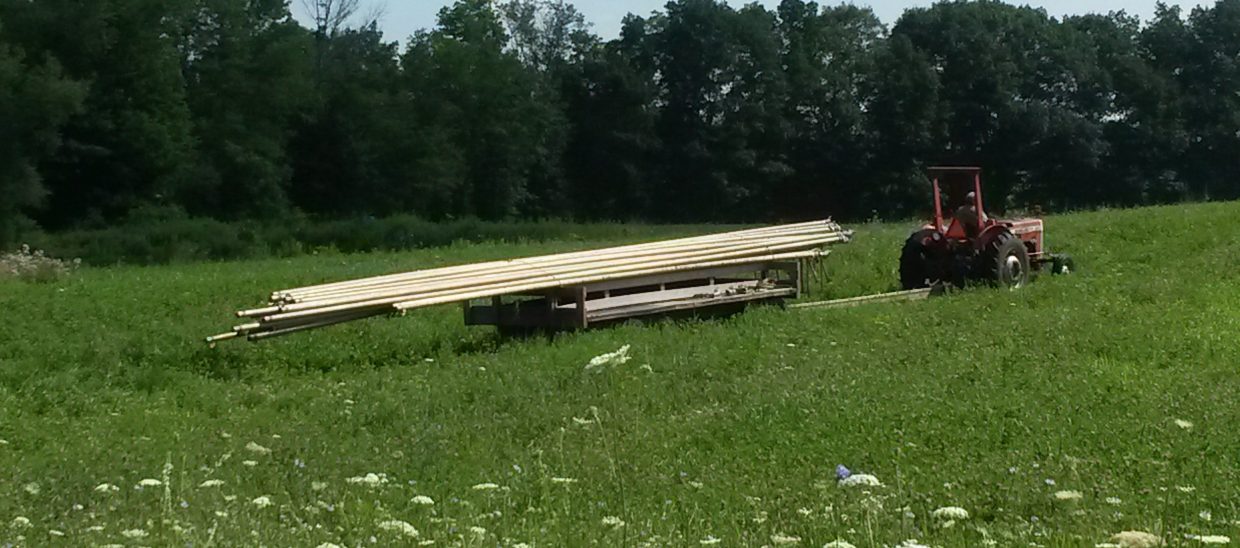
Moving the pipes is a difficult job, but crucial to the success of our crop.
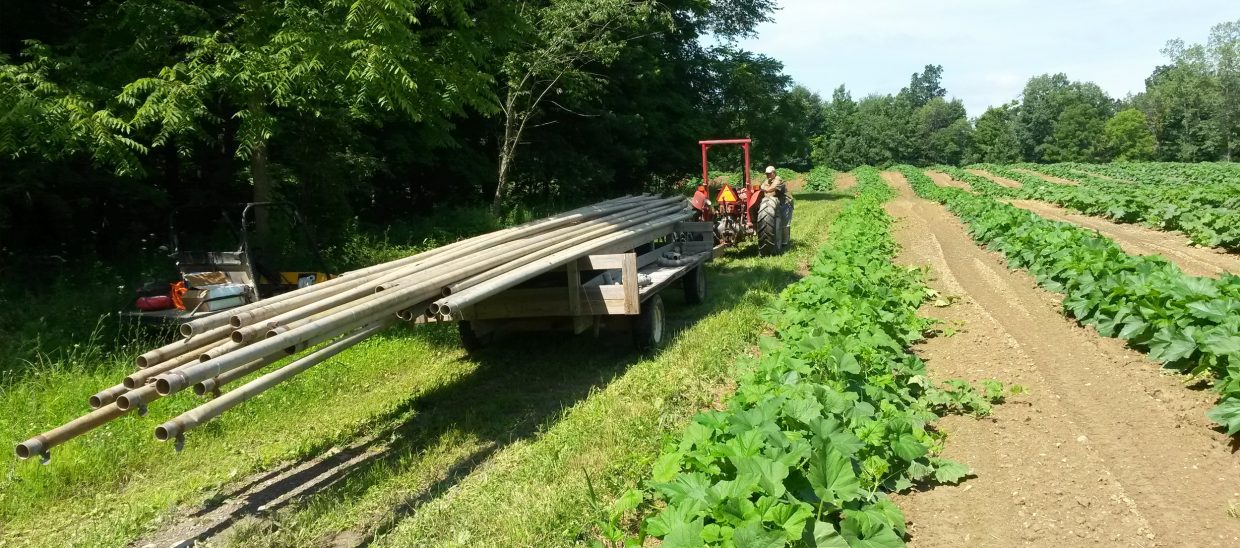
Every year there is a dry spell which would seriously threaten the crop without irrigation. We have a system of 30 and 40' long 3" pipes that we form in to a network from a pond to water the fields.
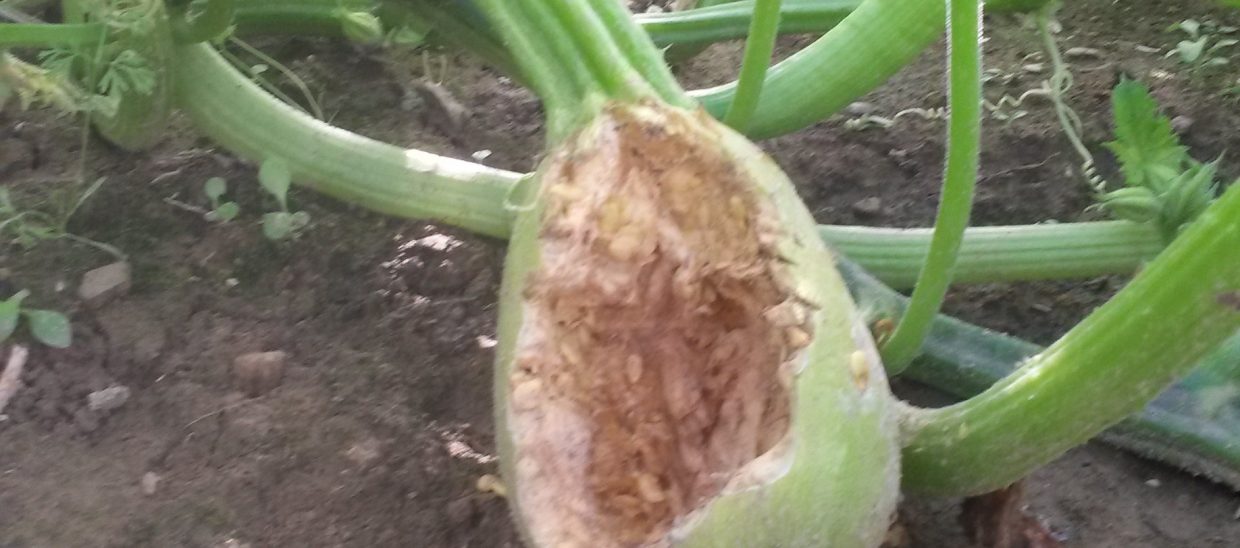
Early in the growth period, animals will destroy many small pumpkins.
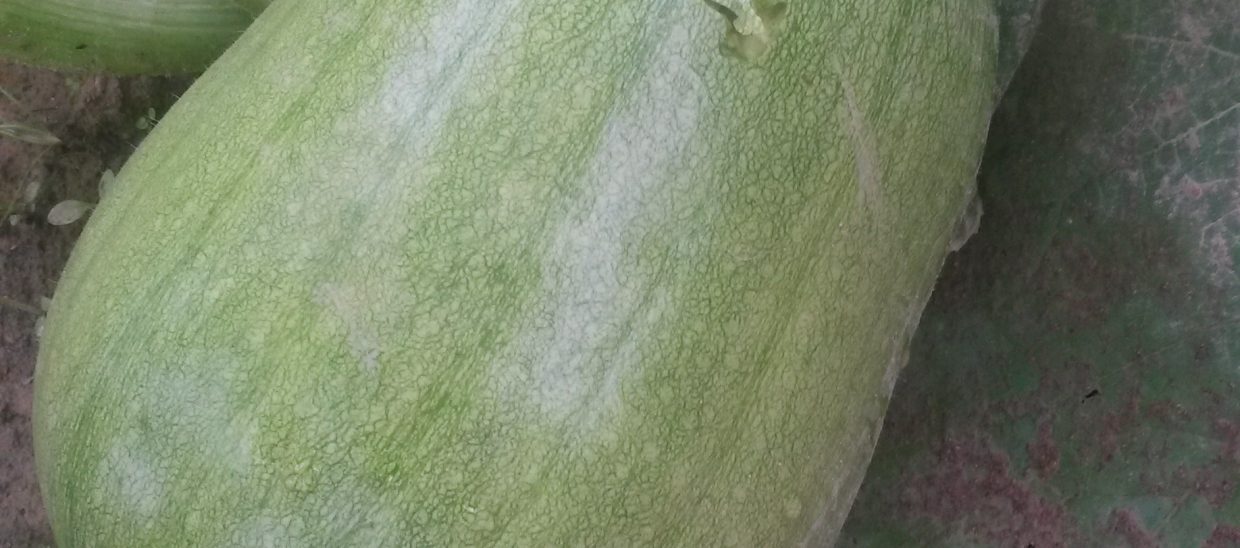
A small bite will not destroy the pumpkin, but will make a permanent scar on the surface.
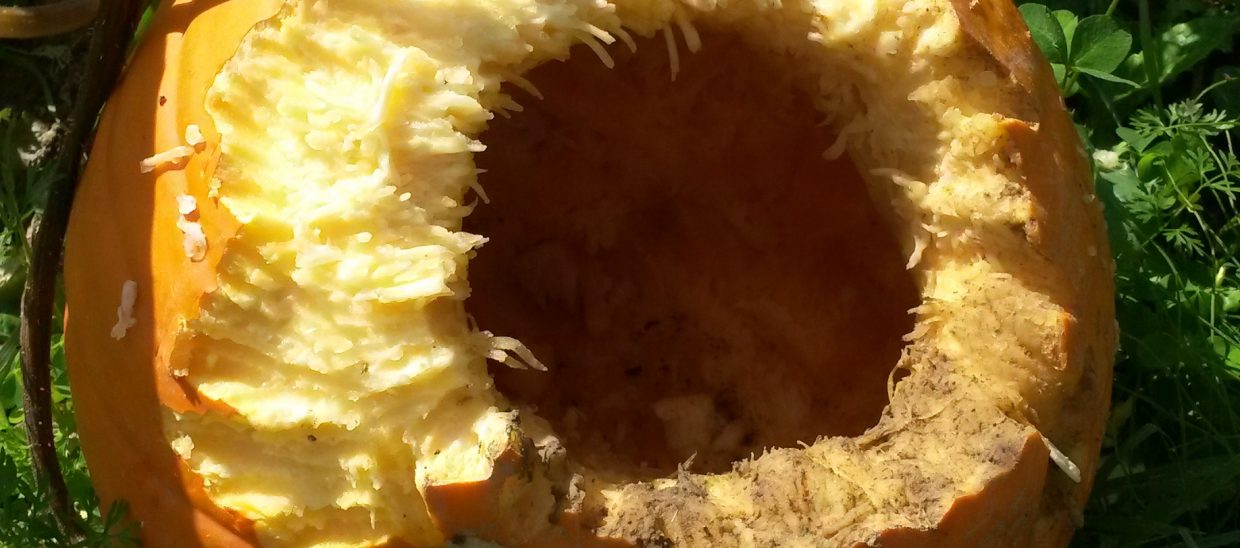
It was likely a groundhog who destroyed this.
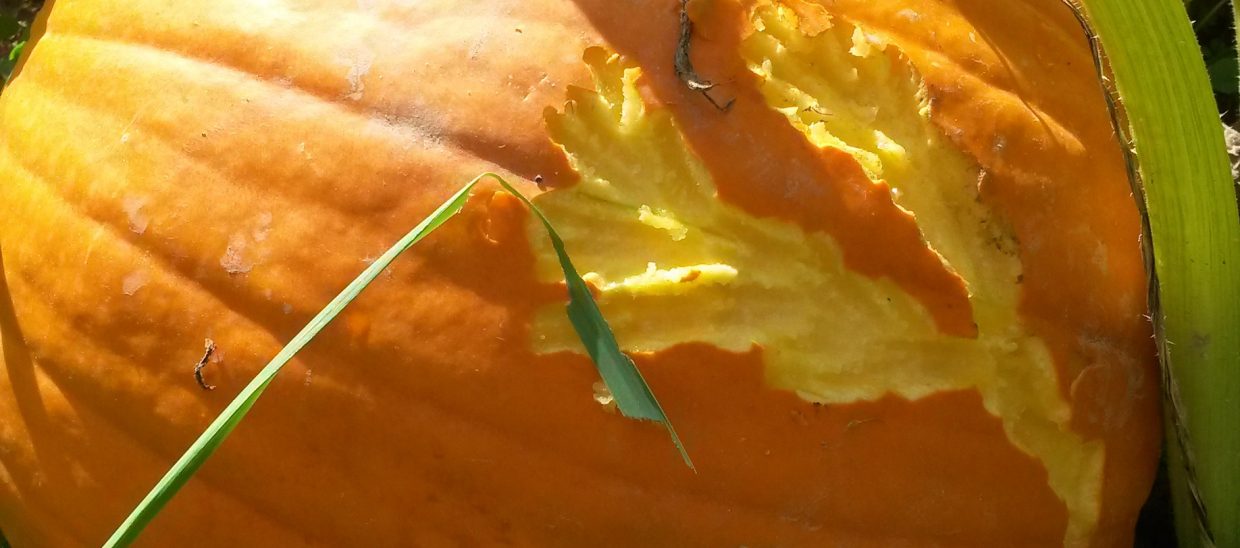
If the animal doesn't chew all the way to the inside, the pumpkin will continue to grow but with a scar.
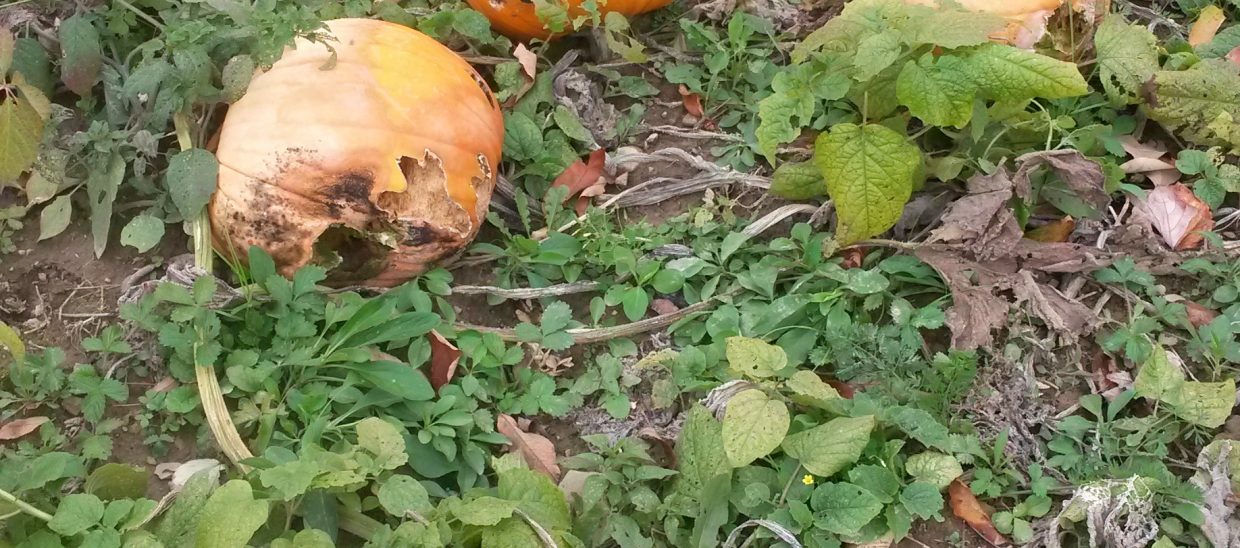
During the growing season this area was covered from view with large pumpkin leaves. It is difficult to find all the areas that animals, usually groundhogs, are eating pumpkins.
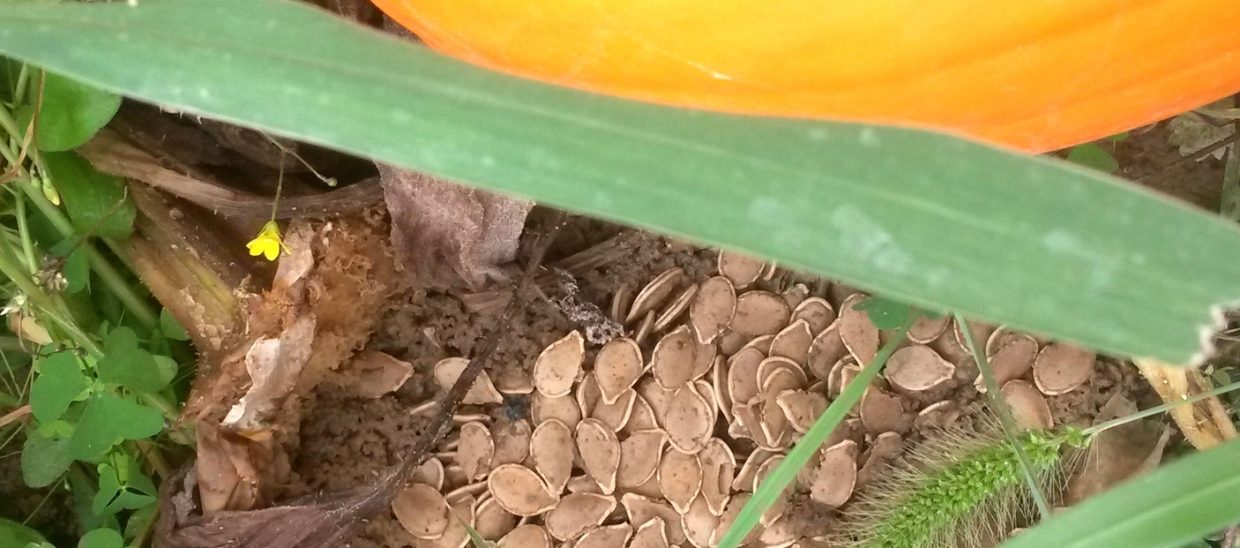
The pile of seeds beside this pumpkin is all that is left of a pumpkin that was eaten by animals, probably groundhogs.
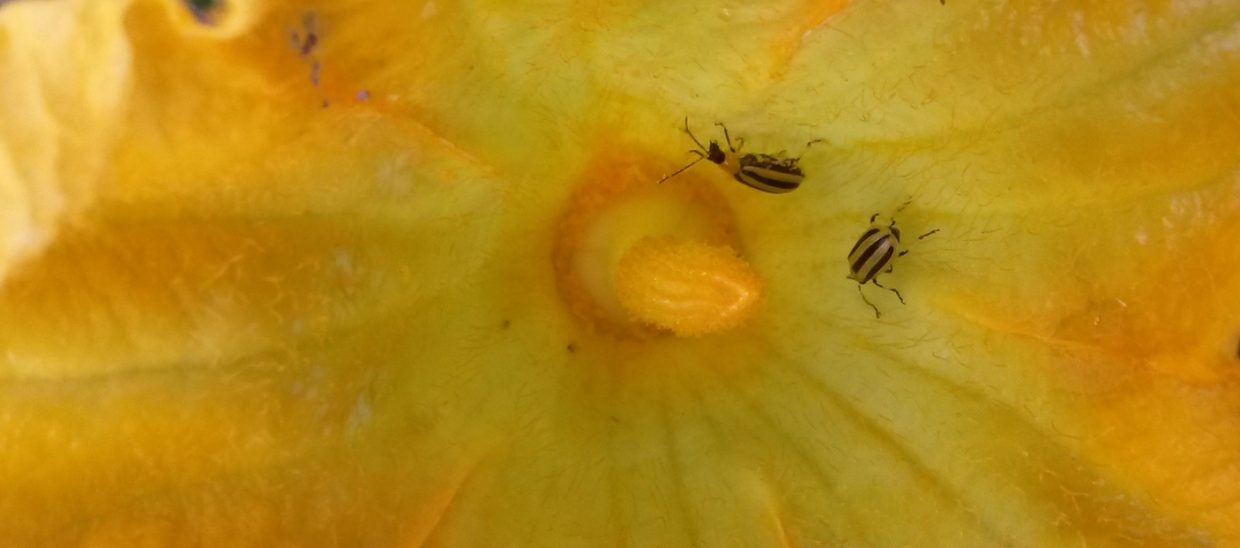
These tiny 'cucumber beetles' are one of the biggest threats to raising a vine crop because they carry diseases from plant to plant.
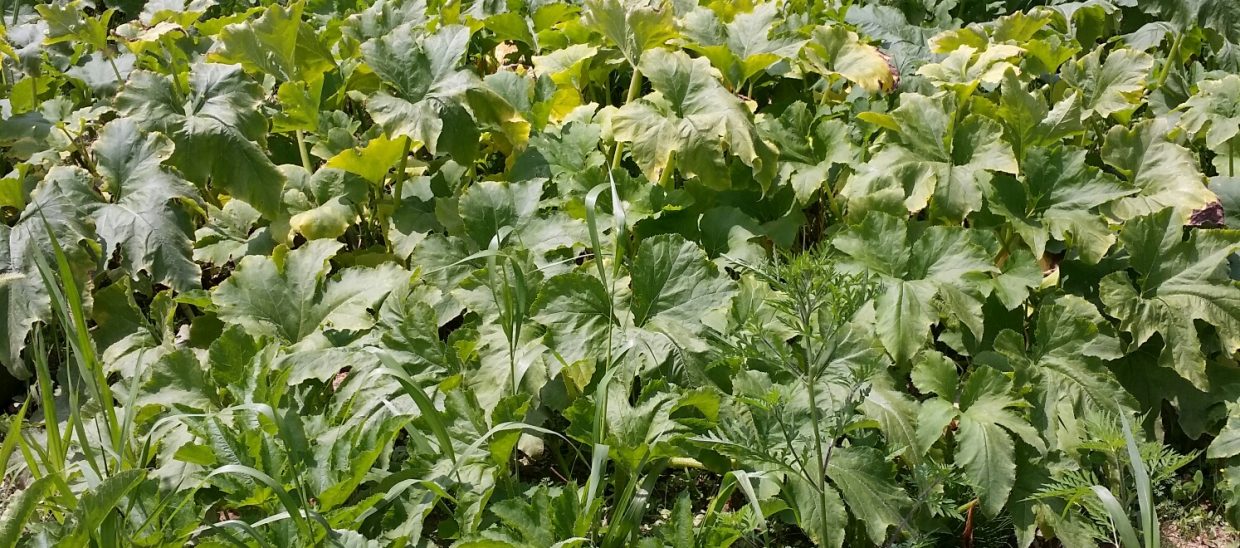
The discoloration shows that mildew has begun to spread from plant to plant, which dramatically limits a crop if the plants die before the pumpkins are large and mature.